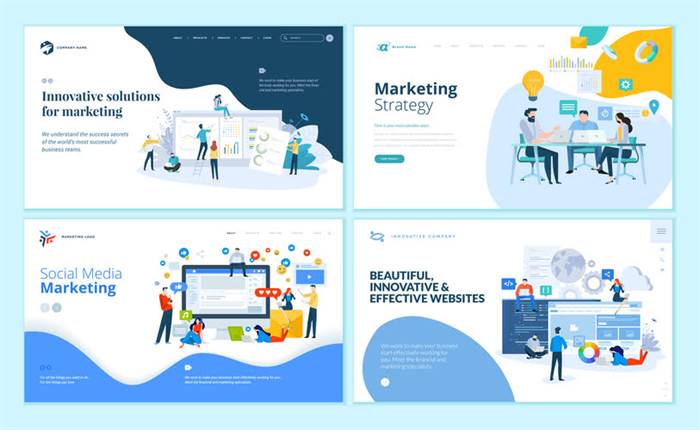For example, a cloud storage service provider can charge users based on the amount of storage they use. This is why pay-as-you-go is often referred to as a «usage-based» or «consumption-based» model. Backup as a Service is a reliable, highly-secure managed cloud offering dedicated to backup and recovery services blockchain-as-a-service (BaaS) definition for businesses and organizations. Client companies don’t have to purchase and maintain servers and external hard drives to store backups. Instead, they can connect to the cloud backup app, configure backup preferences, and let the solution handle data encryption, backup files, and data center maintenance.
The BaaS layer provides the necessary two-way data flow between banks and end customers. BaaS also allows third parties to bypass certain development stages by accessing https://www.globalcloudteam.com/ the banks’ functionality instead of creating their own processes from scratch. Therefore, they can go to market sooner with their offerings, saving time and money.
Why Does BaaS Exist?
Brands refers to the businesses (usually non-banks) that want to embed financial services into their existing products and services with the goal of enhancing the customer experience for their customers. Innovative fintechs are leading the charge by leveraging banking as a service to remove the friction between businesses, banks, and the customers they both serve. At the same time, traditional banks can create new revenue streams by launching their own BaaS platforms.

Banking as a Service is yet another fintech innovation that is enabling bank and fintech collaborations. The tickler is, many of these innovations are confused for the other. With the Introduction of Kaleido, a Blockchain Business Cloud that facilitates the creation and operation of private networks to AWS customers.
How do companies make money from embedded finance powered by BaaS?
This, in turn, ensures business continuity and a steady revenue flow. Once you set up the solution, all new data on your network and devices will automatically be streamed to secure storage. You won’t need a dedicated team to save, categorize, and monitor data. Bypass all the time wasted as the cooling period when you add a new beneficiary using business BaaS.
The essential value of BaaS lies, of course, in its innovative digital nature. Financial operations are an inseparable part of any business, and every party involved can reap significant benefits from streamlining the process. In some cases, BaaS serves as a backbone for financial app development. Betterment, a popular investing app, is an example of such an application.
How is Banking as a Service different from traditional banking?
But what they mean by that term—and their ability to deliver on it—varies widely. Others include Bond, Solid, Treasury Prime, Stripe Treasury, Moov, Synctera, and Column. These are fees you earn when your customers make purchases with their debit, credit, and charge cards. These card payments typically return between 1.5–3% of every transaction as interchange revenue.
- You may want to test product/market fit to see if there is demand for the financial services you want to integrate into your product.
- Open banking is a scenario where a non-bank receives the customer’s data from a financial institution via an API, but no banking services are provided.
- As mentioned, Backup as a Service protects all the data in your company via military-grade encryption.
- For example, let’s say you add payments to your core solution, allowing your customers to accept money on your platform.
Instead, businesses can connect to a bank’s KYC API, allowing clients to verify their identity quickly and affordably. The topmost layer is the FinTech company that receives data from customers about their transactions. The BaaS providers, in turn, pass along the information to the FinTech layer received from the banks. They assemble into logical groupings that can be used to build functions such as creating and setting up accounts, withdrawals, deposits, and loans.
How do businesses benefit from BaaS?
By issuing debit cards, businesses receive access to their customer’s financial spending data. As we know, “data is the new gold” — and can be invaluable to any business that wants to understand the spending habits of its customers. Firms that use Banking as a Service have a distinct advantage since they can gather all of their customers’ financial data from banks and other financial institutions in one place. That helps them see how customers manage their money, when they shop, spend, and save — giving them a leg up on competitors. These providers allow their customers to operate under their license and, depending on their business model, both provide the technology and compliance functions such as KYC checks and transaction monitoring. Typically the BaaS provider will hold a banking license or EMI license.

Banking-as-a-Service or BaaS describes an approach in which banks provide financial services through applications built on top of their APIs. The popularity of BaaS is because it allows businesses and consumers to reap the benefits of modern banking without having to physically engage with a bank. By offering financial services to users, BaaS providers help empower end-users to take control of their finances by offering them more flexible banking options. This growth industry is taking the financial world by storm and is expected to grow at a compound growth rate of 25%, reaching an estimated value of £1.9 billion by 2024. The provision of BaaS benefits both businesses and financial institutions, providing more flexible payment solutions for users and higher Return on Annual Assets for banks. If you choose to work directly with a bank, launching embedded financial products can take 2 years and $2M.
Additional Services
Using API technology, BaaS users like fintechs, digital banks, and other non-bank businesses can also customize their customer journeys. A seamless, customized journey is so important to keeping pace with the competition as customers are more concerned with the customer experience today than products or prices. Open banking gives third parties access to existing bank customer data while BaaS gives third parties access to bank functionality. BaaS is a service that connects fintech service providers to banking services. In this way, providers can interact with customers under their own brand within the bank’s infrastructure. The way in which companies manage their money and receive payments is changing.
Companies typically keep the revenue, return it to their customers in the form of rewards, or some combination thereof. Clients can implement flexible recovery options – from granular files to full systems. They have some form of orchestration between public and private servers to allow data transfers as needs, costs, and demands change. This gives businesses more flexibility and backup options for data use and deployment.
Written by Team Quickwork
Finding the right third-party integrations presents another issue for financial institutions. Banks should evaluate consumer preferences to find strategic alliances with outside financial service providers. For example, if a bank finds that customers want to pay their electricity bills through the banking app, they should reach out to local utility service providers to set up integration features. Financial services are no longer just about lending money and taking deposits. They are investing in blockchain, smart contracts, and other cutting-edge technologies that make their customers’ lives easier. With more and more companies introducing digital financial services, consumers have more choices.

